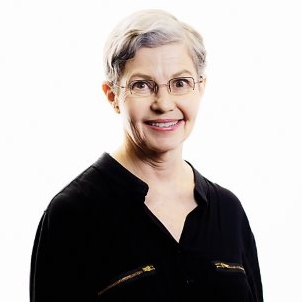click to dowload our latest edition
CLICK HERE TO SUBSCRIBE TO OUR NEWSLETTER


Published
5 years agoon
By
adminHILARY JOFFE
The year is closing on a more sober note, as the economy emerges from recession, Eskom enters its fourth week of load shedding, and the rand is back down to more than R14 to the dollar after its bounce to about R12.30 at the start of this year.
Will 2019 be a better year, one in which the economy at last begins to deliver the growth and jobs South Africa needs? That will depend in part on three “E”s – Eskom, elections, and perceptions of emerging markets.
The crisis at Eskom highlights the extent of the damage done to the economy and its institutions by the Zuma years of corruption and state capture. It also shows just how hard the ailing state-owned enterprises will be to fix.
Load shedding has put a big question mark over the tentative revival in economic growth. It has also dampened the hopes that were raised by Ramaphosa’s successful investment conference in October, and has cast a shadow on the other initiatives his government has undertaken to restore investor confidence and boost investment, growth, and job creation.
If load shedding is sustained into 2019, and Eskom cannot guarantee a reliable supply of power, all those promises of new, job-creating investment will be unlikely to materialise, and growth will probably falter again.
Public Enterprises Minister Pravin Gordhan has promised speedy action to address Eskom’s severe short-term operational challenges, as well as to put plans in place to restructure it over the medium term. Whether he can fix what needs to be fixed will be crucial in shaping the economic outlook for 2019 and beyond. This is not only because keeping the lights on matters for consumers and businesses, but because Eskom’s financial crisis is arguably the biggest risk to South Africa’s national budget and its credit rating.
As it is, South Africa’s economic growth rate is way below what the country needs to address its so-called “triple challenges” of unemployment, poverty, and inequality.
Over the past five years, the economy’s average annual growth rate has been hardly more than 1%. Given that the population is growing at about 1.7%, that means average living standards are declining. The pain of slow growth is also evident in the unemployment rate. This rose to almost 28% this year – at a time when the global unemployment rate has fallen to a 40-year-low of about 5%.
The latest official statistics show that the economy put in a positive performance in the third quarter of this year after two negative quarters. This means that growth for the year as a whole is still going to be below 1%.
The South African Reserve Bank’s latest forecast for 2018 is 0.6%, rising to 1.9% in 2019, and 2% in 2020. Some economists are a little more optimistic, however.
Old Mutual Investment Group Chief Economist Johann Els reckons that growth could reach 2% next year, rising to 2.5% in 2020. This will happen with lower inflation, interest rates moving sideways, and a revival in business and consumer confidence after next year’s elections.
South Africa needs sustained growth of at least 3%. However, improvement in employment levels and living standards will depend on whether the Ramaphosa government can implement reforms to make the economy more competitive and attractive to investors.
It made a start in 2018 with changes to leadership at key ministries and public entities and measures to fight corruption. It also finalised the Mining Charter, and made promising changes to damaging visa regulations. However, much more can be done to stop the rot in the economy and get it growing again.
The question is whether Ramaphosa has the political support to implement controversial reforms. This is where the second “E” – elections – comes in. Many in financial markets are looking to the elections in May in the hope that Ramaphosa and his party will gain a clear majority. This will give him the political firepower to implement investor and business friendly reforms.
Others are sceptical as to whether the elections will change much at all. They also question whether there is the political will to do what’s necessary to halt South Africa’s slow economic slide.
Assuming the will exists, it will take time. South Africa cannot rely any longer on the favourable global environment for emerging markets that ensured a steady flow of foreign money in recent years.
After the rand’s “Ramaphoria” rebound early in the year, it has been highly volatile, mainly reflecting shifts in investor sentiment towards emerging markets.
Higher interest rates in the United States and the prospect of a US-China trade war have tended to make global investors more risk averse and less likely to put cash into higher-risk emerging markets. So, too, have crises in countries such as Argentina and Turkey during the year, which had an impact on the rand in one way or another. The rand exchange rate in turn affects South Africa’s inflation rate, and the Reserve Bank’s interest-rate decisions.
The Reserve Bank is being super-cautious in the face of an uncertain global environment, and in November, it hiked interest rates. Whether more hikes will follow in 2019 depends on the rand exchange rate as well as factors such as international oil prices, and local electricity and food prices.
Els believes all the negatives are already priced into the rand, and it could strengthen to R12 to the dollar next year. Others are more sceptical, with NKC African Economics forecasting the rand at R14.50 to the dollar by the end of 2019.
For South African households, the message is that 2019 is likely to be somewhat better than 2018, but recovery will be slow, and there will be risks. It’s a time to exercise caution and patience, and hope that the three “E”s go right.
